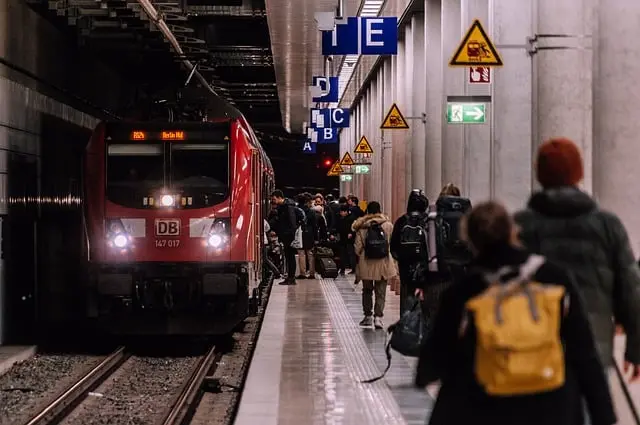
Railway Operators: National vs. Private
Italy’s railway system consists of two main players:
• National Operator: Trenitalia
Trenitalia is operated by the Italian Rail Network (RFI, Rete Ferroviaria Italiana). As a government-owned company, it covers the entire country and serves as the backbone of Italy’s railway transportation.
• Private Operator: Italo
Italo, established in 2011, is a private company focusing on high-speed routes between major cities. Italo has gained a reputation for excellent service quality, often surpassing Trenitalia in comfort and customer satisfaction.
Types of Trains
Domestic Routes
1. High-Speed Trains (Le Frecce)
Trenitalia’s high-speed trains include:
• Frecciarossa (FR): Red trains, the fastest and most modern.
• Frecciargento (FA): Silver trains, connecting mid-sized cities and major hubs.
• Frecciabianca (FB): White trains, a more economical option for routes along the Adriatic coast and less popular lines.
High-speed trains are ideal for fast, comfortable travel between major cities. Although they are more expensive, discounts are often available online, making them a cost-effective option for travelers.
2. InterCity (IC) and InterCity Notte (ICN)
• InterCity (IC): Connects medium and large cities, with decent speed and comfort.
• InterCity Notte (ICN): Domestic overnight trains, offering basic sleeping accommodations but less comfort compared to international night trains.
3. Regional Trains (Regionale or R)
• These slow trains stop at almost every station and offer the most basic facilities.
• Benefits: Low cost, access to less touristy destinations, and an authentic glimpse into Italian daily life.
4. Leonardo Express
• This is a dedicated airport train connecting Rome’s Fiumicino Airport with the central Termini Station. It’s fast, reliable, and occasionally discounted on Trenitalia’s website.
International Routes
Italy connects to neighboring countries via direct train routes:
• TGV and EuroCity (EC): Fast trains to France, Germany, Austria, and Switzerland.
• EuroNight (EN): Overnight trains connecting Italy to Austria and Germany.
• Thello: Trains running between Italy and France.
• Regional trains also serve border areas and smaller international destinations.
Booking Tickets
Online Booking
1. Trenitalia Website
• Tickets are available up to 120 days in advance. Discounted tickets usually appear 30-60 days ahead.
• Regional train tickets are fixed-price and can be booked online only up to 7 days in advance.
2. Italo Website
• Italo’s website is user-friendly, with a simple interface and no registration required. It is often the best option for high-speed routes between major cities.
3. Eurail or Interrail Pass
• These passes are not always cost-effective in Italy due to mandatory seat reservations (10 EUR for domestic high-speed trains and up to 60-80 EUR for international routes).
• Eurail passes cannot be used on Italo trains.
On-Site Purchases
• Ticket Machines
• Machines at train stations have English language options and accept both cash and chip-enabled credit cards with a PIN.
• Ticket Counters
• Avoid these when possible due to potential language barriers and the risk of being charged unnecessary fees.
Train Travel Tips
• Check Train Schedules
Both Trenitalia and Italo provide detailed schedules and stop information on their websites. However, some private regional lines may not appear online and must be checked at the station.
• Be Prepared for Strikes
Railway strikes are not uncommon in Italy. Check for strike announcements before departure to avoid disruptions.
• Keep an Eye on Your Belongings
Security is generally good, but pickpocketing can occur, especially on crowded trains. Keep valuables secure and avoid flashy displays of wealth.
• Platform Changes and Transfers
Pay attention to platform information when changing trains. Italian railways operate on a public transit-style system, so simply move to the correct platform for your next train.
• Validate Regional Tickets
Tickets for regional trains need to be stamped at validation machines before boarding. Failure to do so may result in a fine.
Best Routes for Travelers
• Rome to Florence (Frecciarossa/Italo): 1.5 hours
• Florence to Venice (Frecciarossa/Italo): 2 hours
• Milan to Lake Como (Regionale): 1 hour
• Rome to Naples (Frecciarossa): 1 hour
Conclusion
Armed with this guide, you’re ready to explore Italy’s art, history, and stunning landscapes by train. Whether it’s speeding between cities on high-speed trains or soaking in local culture on regional lines, Italian railways offer a journey to remember. Buon viaggio!
